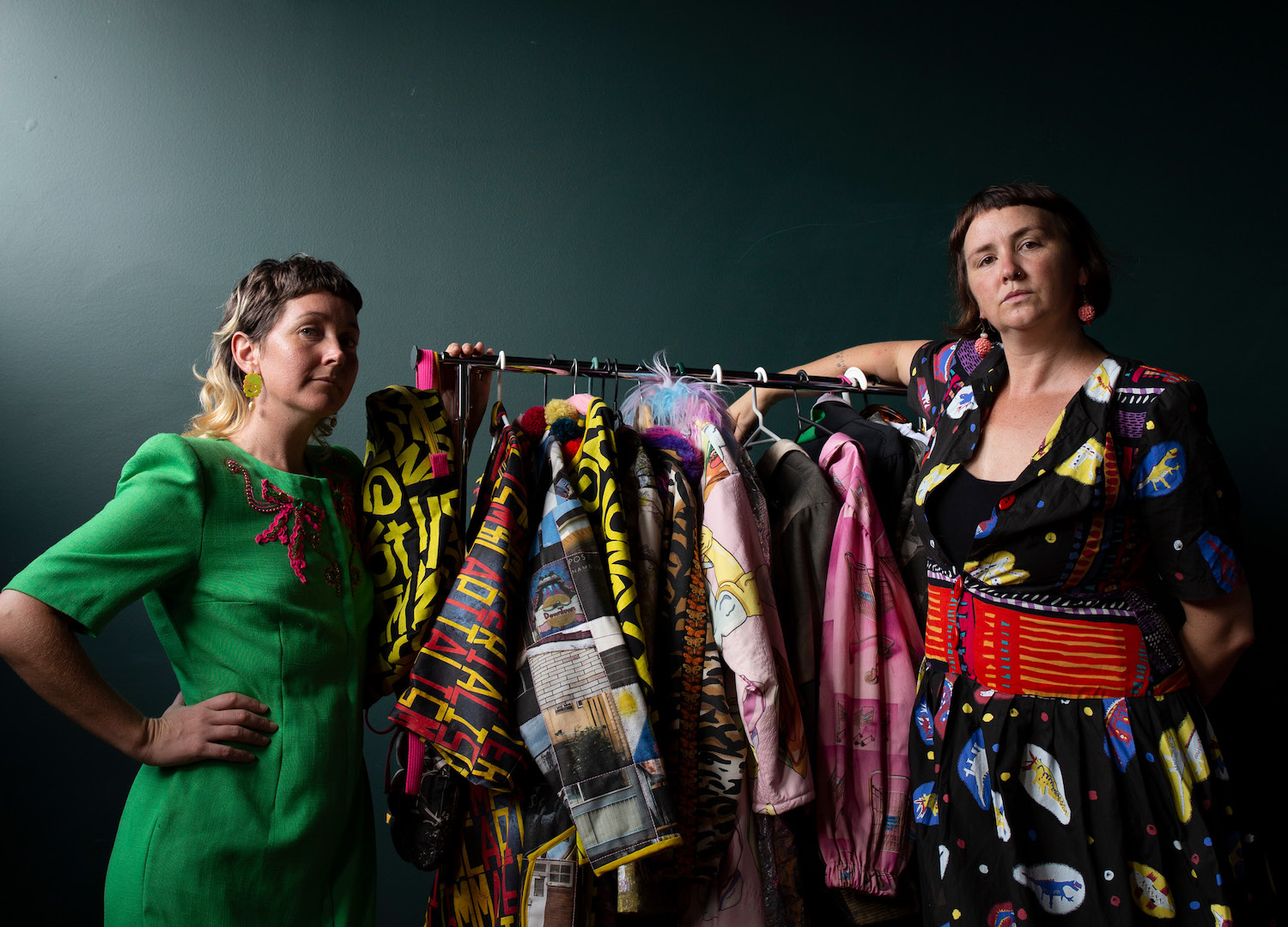
The Sunshine Coat Duo Talk Community, Sustainability and Revolutionary Fashion
As April draws to a close, you’re running out of chances to see The Sunshine Coat Project at the Old Ambulance Station Gallery in Nambour. A love letter to the iconic Sunshine Coast locale of Nambour and a celebration of creative collaboration and community, the exhibition delights in a riot of mixed mediums and multiple artists with a focus on sustainable fashion design, photography and video.
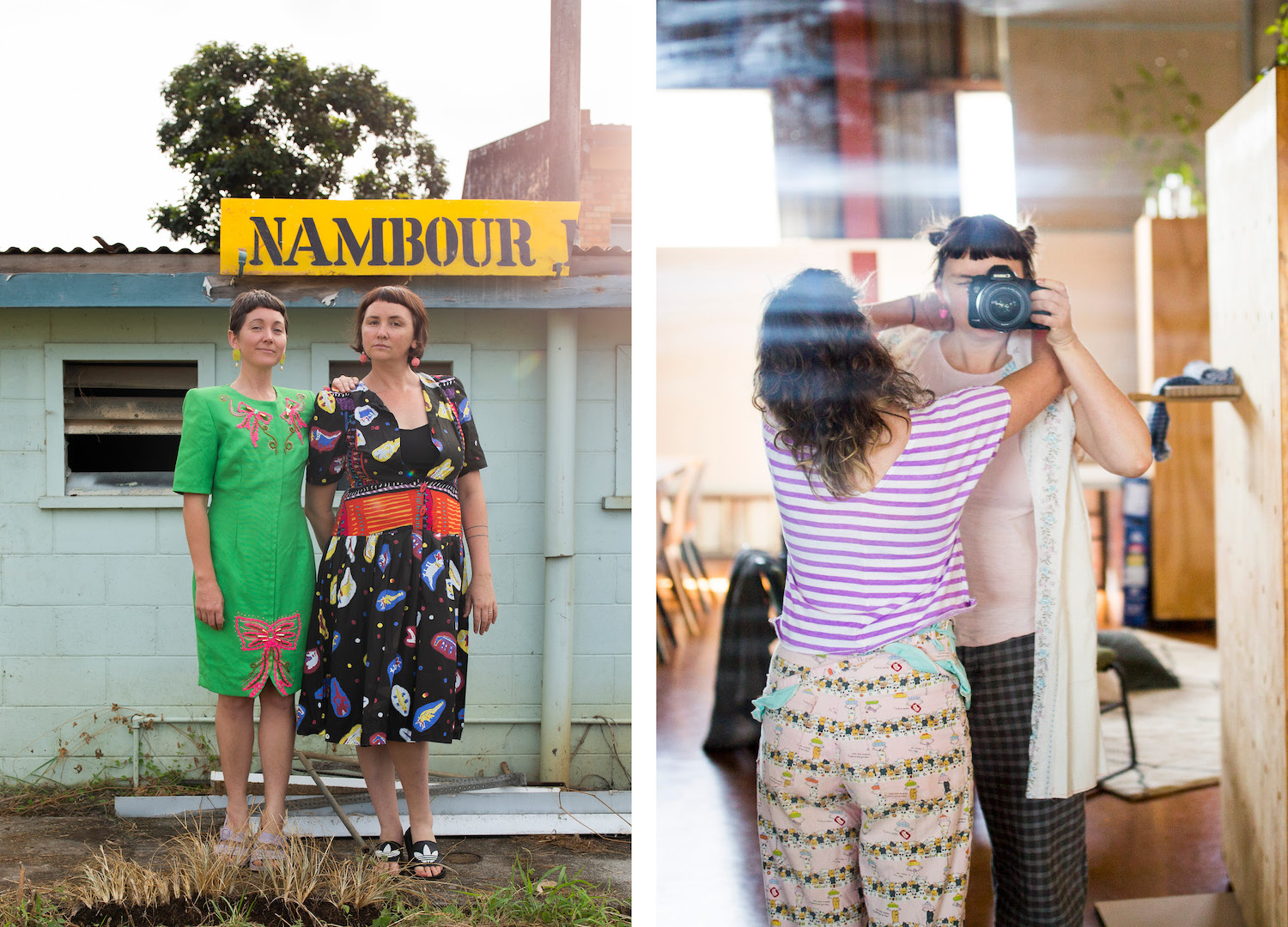
The marvellous minds behind this playful project are Ketakii Jewson-Brown and Shaye Hardisty – an interdisciplinary artistic duo of firm friends. Ketakii is a fine art photographer who has exhibited at The Cooroy Butter Factory, Horizon Festival and The National Portrait Gallery in Canberra and Shaye is a seamstress and musician whose fabulous slow fashion can be found online at @Little_House_Seamstress.
Before their beautiful exhibition is over, it’s going out with a bang with a Sustainable Fashion Conversation on 28 April that celebrates the project’s commitment to sustainable fashion and the coinciding Fashion Revolution Week 2023.
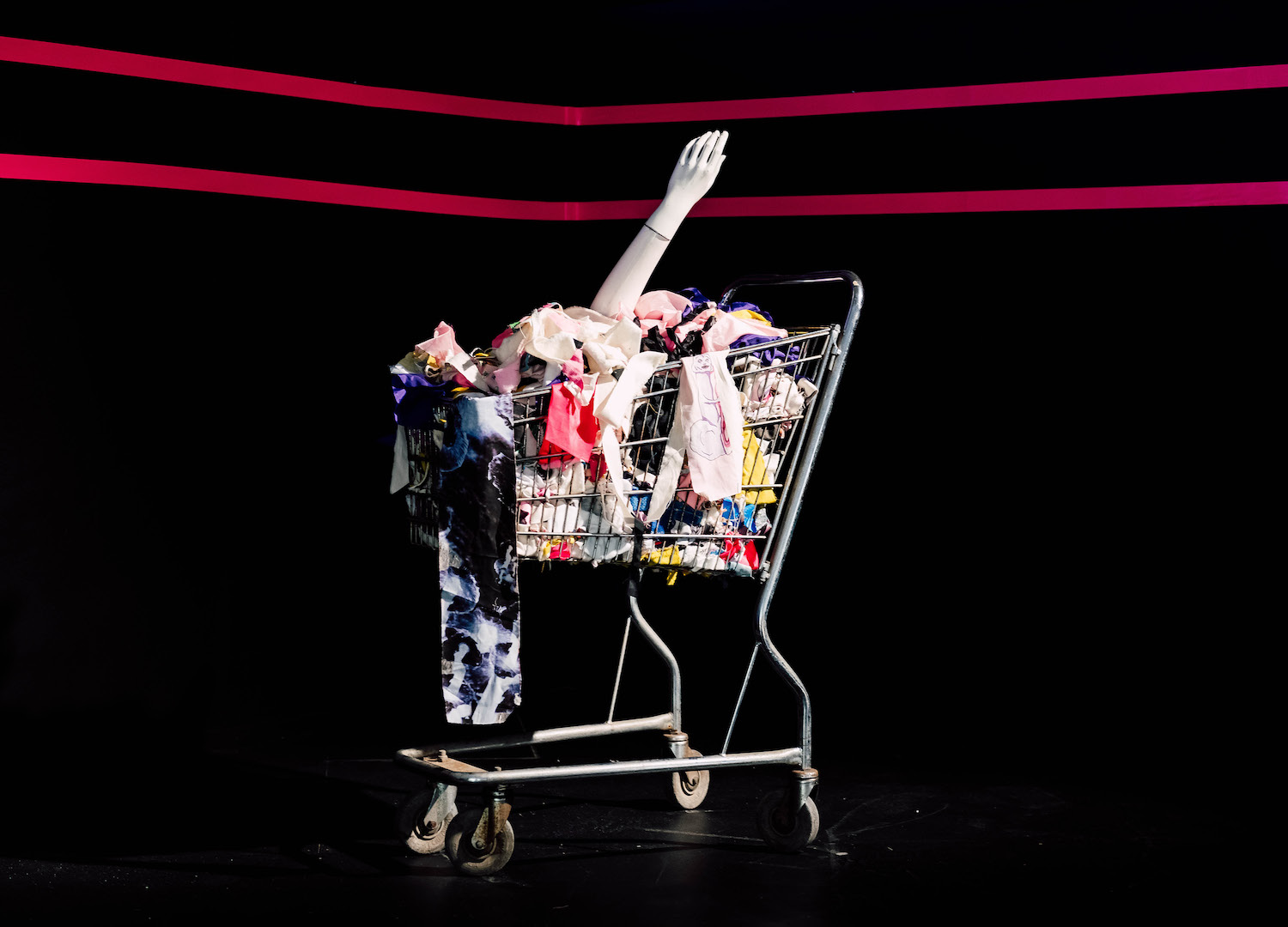
The evening will see local sustainable and slow fashion advocates – including Louise Visser from Sinerji Organics, Amanda Knights from Sunshine Coast TAFE, Karina Seljak from Seljak, Somar Xavier from Sapling Textiles and Pete Trimble from Pete Sews – come together in a discussion moderated by Deborah Fisher from the University of The Sunshine Coast. We sat down with Ketakki and Shaye to learn more about the exhibition, its inception and what we can expect from this exciting conversation.
READ MORE – Still Talking About a Fashion Revolution: 10 Years On From Rana Plaza
Tell us a bit about yourselves! How did you meet and what inspired you to work together?
Ketakii Jewson-Brown: I am a photographer, lifelong vegetarian, lover of dancing and my primal zodiac is a Doberman Pinscher.
Shaye Hardisty: I am a self-taught sewist, a banjo player, a lover of pink and my primal zodiac is a silk worm.
Ketakii: Our husbands met through music and have played in bands together for many years – we met through them essentially. After being in the same circle of friends – mostly musicians and creatives with young children – our friendship deepened when Shaye asked if I would be present at the birth of their second child, Dali. There is something about birthing that brings people closer. We started an Instagram page called Mill Street Fashion Walk to archive the eclectic and diverse street fashion of Nambour in 2019. We were inspired by similar Instagram pages in Japan – Tokyo Fashion and Harajuku Fashion Walk. We then travelled to Japan together on a fabric-buying trip – we returned with almost 40 kilograms of fabric between us. We have been supporting one another with our creative talents – I photograph Shaye and she sews me clothes. [That was] the beginning of an inspiring and nurturing collaborative friendship.
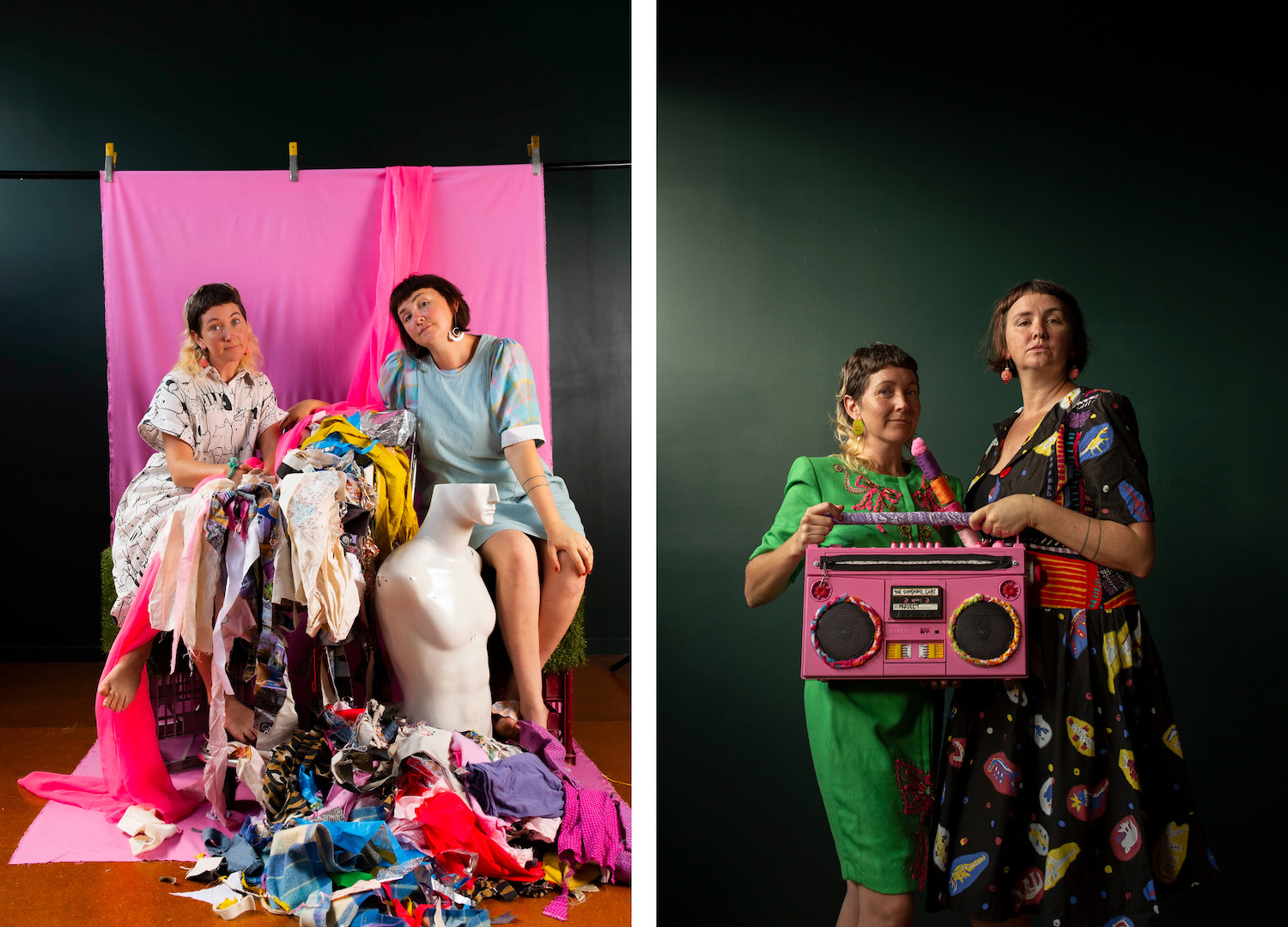
What was the genesis of the Sunshine Coat Project?
The Sunshine Coat Project was born when the Sunshine Coast Council offered us a residency at 2nd Space in Nambour. We needed to pitch a project and The Sunshine Coat was an idea we had simmering along after Shaye had sewn Ketakii a bright yellow coat out of a woollen blanket from an op shop which Ketakii described as feeling like “a sunshine coat”! Initially, we had planned a three-month project that would focus on the entirety of the Sunshine Coast but, very quickly, we realised that all our inspirations were focused on Nambour and it was going to take a lot longer than we expected to achieve what we envisioned.
The project has been described as a “love letter to Nambour”. What are the things you love about the place?
The diversity of the people who live here. The eclectic fashion. The acceptance and allowance one feels from the locals. The natural elements that are so close to town – there are platypuses in the local creek! The way it feels like a city in a country town. The trolleys. The sense of community and belonging.
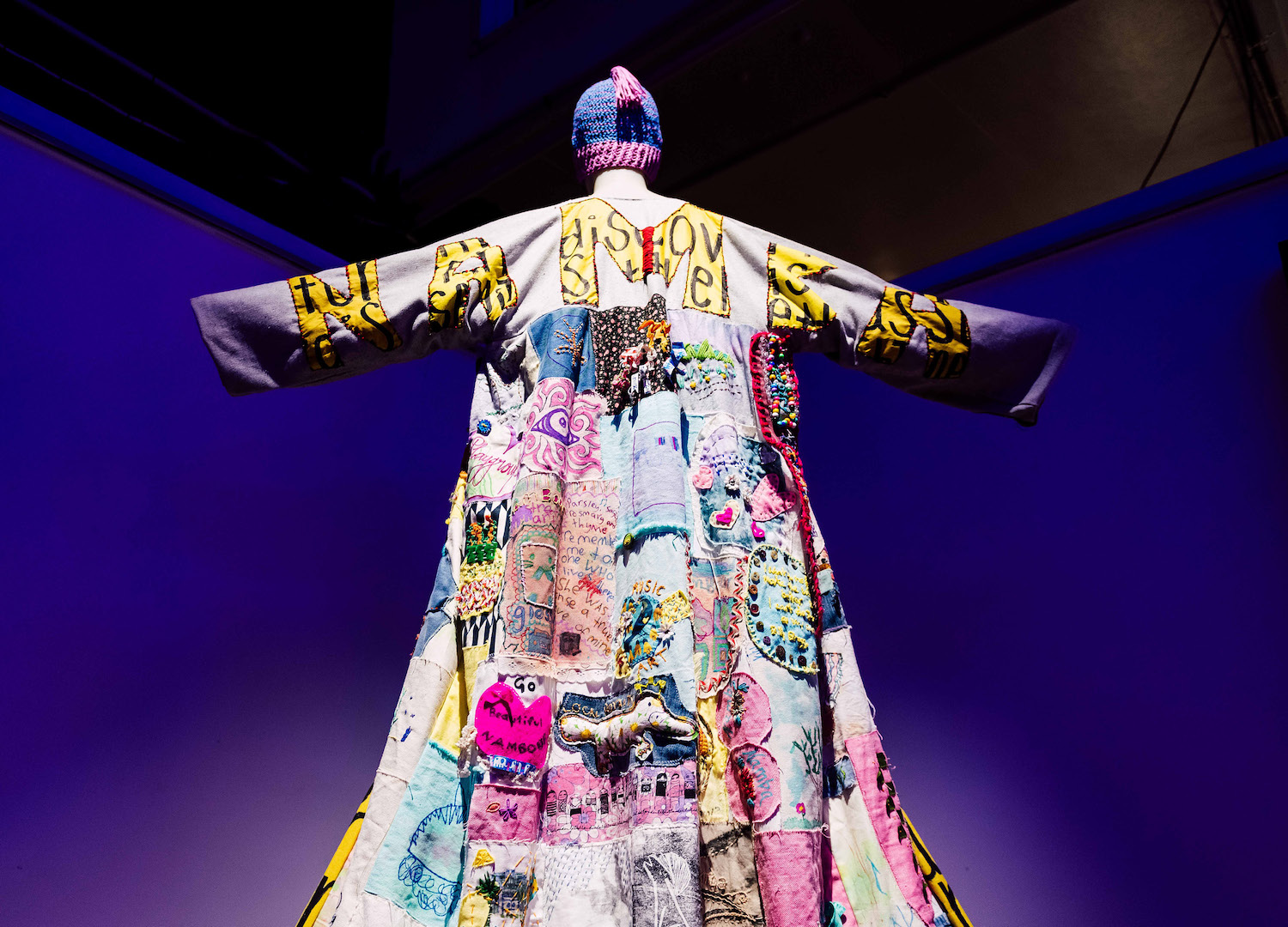
How do the coats visually express the personal stories, experiences, feelings and memories of the people?
Through deep listening by being in place for a solid length of time and the collection of wider community stories and memories through an online survey and community workshops, we were able to find a way to dive below the surface of this town and its people.
Each of the 17 coats is unique in its visual expression – 11 of these are collaborations with other artists whom we worked with to either digitally print their work onto the fabric which the coat was sewn from or to work together on design elements and ideas. One coat was inspired by the artist’s lino print on the back stairs of an iconic Nambour building which we had completely overlooked until she brought it to our attention.
We feel that this is largely due to the slow and considered nature of this project, which found us spending many hours in place – listening, watching, feeling and connecting with this incredible community. Without them, this project would not be what it is today.
How do you find the other creatives that you collaborated with on this project?
We reached out to Humble Dumpling, who was one of the first street artists whose work caught our eye and through him, we have been introduced to most of the other creatives involved in the project. The 11 creatives that collaborated with us are: Humble Dumpling, colouredtapesmatter, Nicole Voevodin-Cash, Jordyn Burnett, Mathilda Muller, SWAK, Darren Blackman, Silver Wizard, Lucky Phil, Kirsty Williamson and Lee Hardisty.
Outside of the collaborating artists, we had such a wide network of supporters who, through some act of magic, found us and us them. We feel that this is largely due to the slow and considered nature of this project, which found us spending many hours in place – listening, watching, feeling and connecting with this incredible community. Without them, this project would not be what it is today.
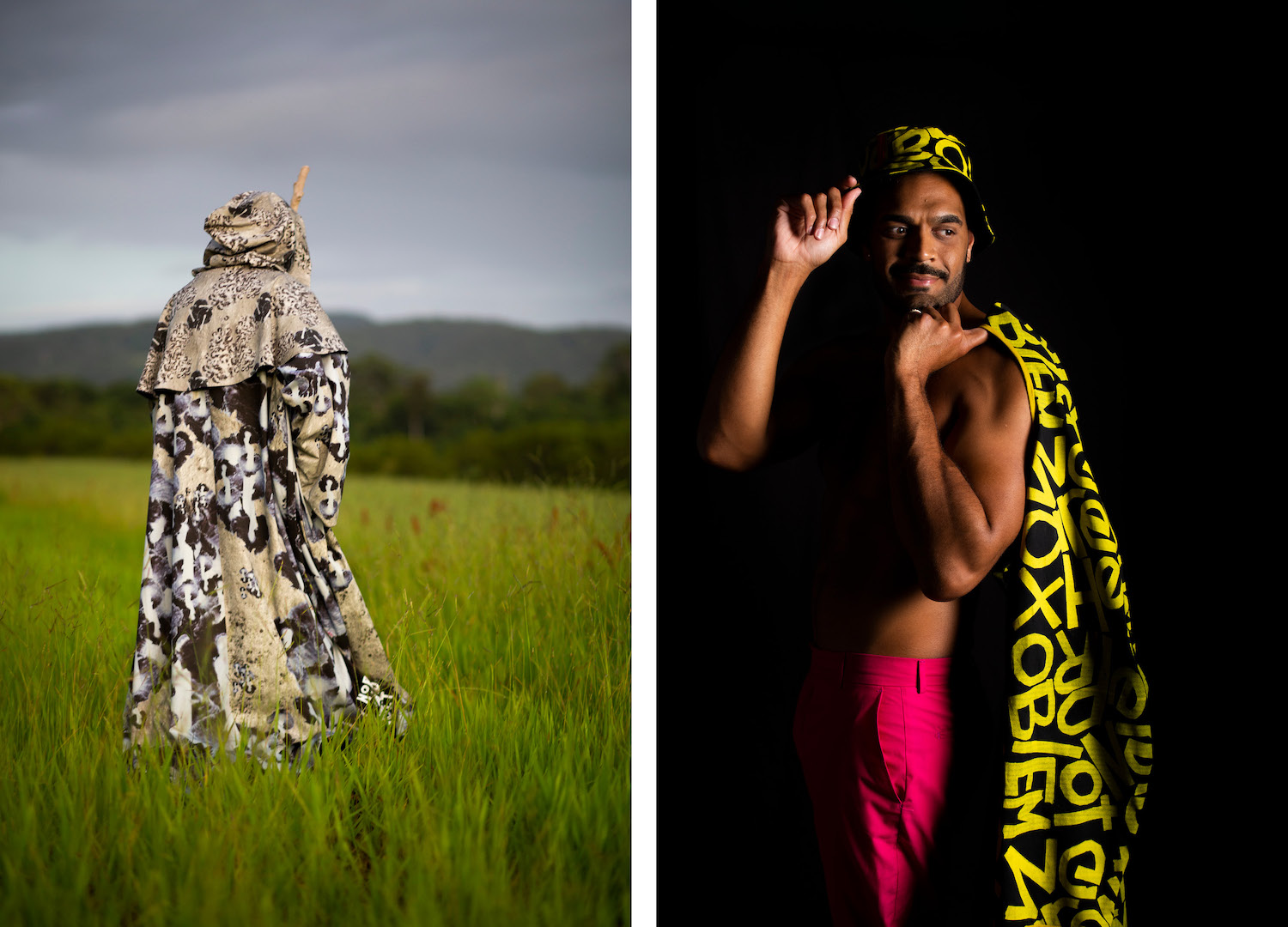
Why was it important to you to incorporate sustainability and a slow fashion ethos into the project?
Both of us as humans feel the need to make as much of a commitment to be the change we want to see in the world as possible and this project was no exception. We have a strong belief in doing what you can, where you can, to make the world better and hopefully inform others along the way that a series of small actions can have massive ripple effects.
Once you know about the enormity of waste the fashion industry generates and the detriment to the environment you cannot unknow it; even though many try and live in denial of its magnitude.
We have a strong belief in doing what you can, where you can, to make the world better and hopefully inform others along the way that a series of small actions can have massive ripple effects.
Where did you source your fabrics and materials from? What were the most unexpected finds? Do you have a secret favourite?
We had a lot of fabric digitally printed through Next State Print in Melbourne; the fabric we chose was Eco Drill, a mix of 70% recycled and 30% organic cotton. All of the other fabric used was either given to us or sourced from local op shops. We found many metres of lining fabrics in almost every colour imaginable – Shaye was about to use a blue when she really needed a brown and Ketakii popped down to the Living Aid Op Shop on Howard Street and the perfect brown lining fabric was waiting there for her. Unexpected finds were amazing people who gifted and lent us mannequins for our exhibition, a cute Big Pineapple patch found on eBay, all of the patches made at the libraries around the coast for the Community Coat, and a neon pink satin that we used as a lining (we utilised every scrap of that perfect pink!).
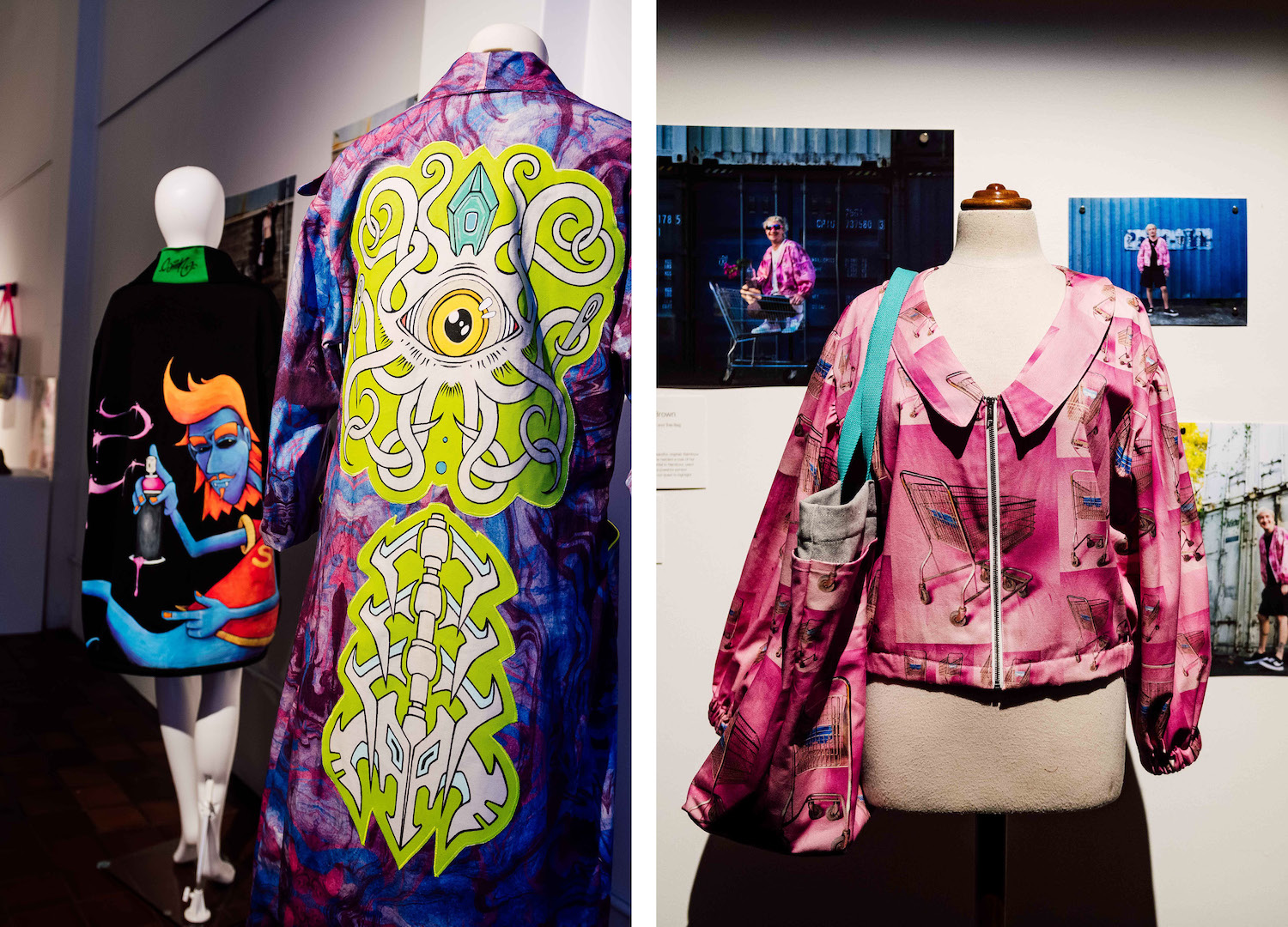
What can you tell us about the Sustainable Fashion Conversation event?
We really wanted to hold an event to coincide with Fashion Revolution Week 2023 and thought a speaking event that showcased local sustainable advocates was the best option. While highlighting the need for a better understanding of sustainability within the fashion industry, it is also an opportunity for us to shine a spotlight on local businesses that are champions of the cause. We feel that the more we gather and share information and strategies, the better informed and motivated everyone is and hope that this is the first of many events of this nature that will create ripple effects out into the wider community.
Is there anything you’re particularly looking forward to from the evening?
Ketakii: Sharing an intimate evening full of knowledge with an engaged audience. Oh and the yummy food that Shaye has promised to make for everyone.
Shaye: Community is one of my favourite things, so bringing people together for a conversation and some food, while building awareness about ways sustainable fashion can look, makes me very excited.
It’s not about one perfect sustainable person that will fix the problem – it’s millions of imperfect sustainable people doing their best.
What message do you hope people will leave with?
Ketakii: That there is a strong community of like-minded individuals out there and that any small positive, sustainable action you can commit to will have an impact.
Shaye: I like the reminder that it’s not about one perfect sustainable person that will fix the problem – it’s millions of imperfect sustainable people doing their best that will have the most impact. I really hope people will leave feeling connected and empowered.
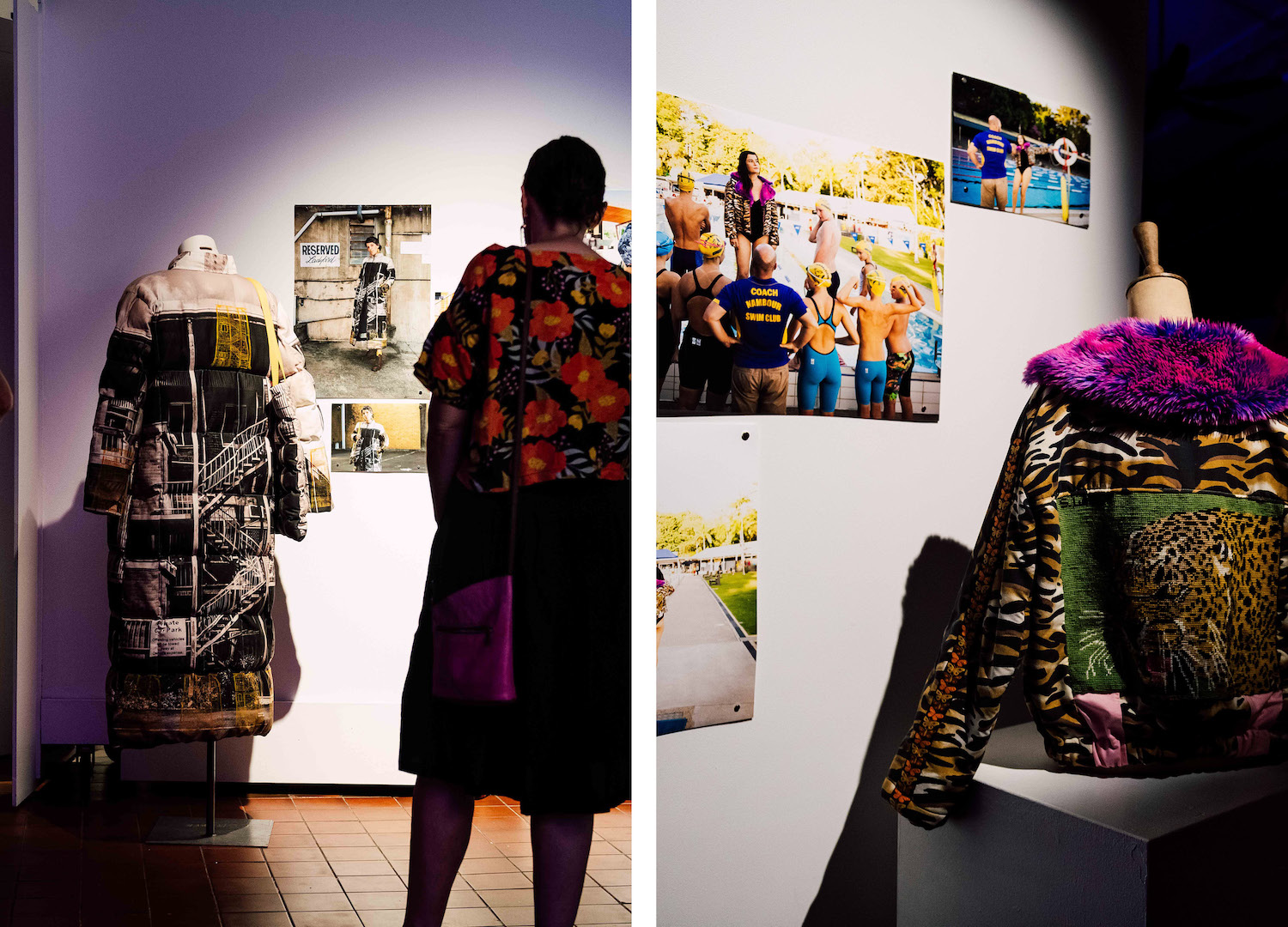
The Sunshine Coat exhibition coincides with Fashion Revolution week, where fashion activists the world over join together for seven days of action. The campaign this year is shaped around the theme of Manifesto for a Fashion Revolution. What does revolutionary fashion look like to you?
Revolutionary fashion is not buying into trends, in fact, it’s about making your own rules when it comes to what you wear and how.
Revolutionary fashion is not succumbing to the idea that you constantly need to buy new clothes – but that you can remix your wardrobe to work for you. And if it’s really not [working[ – have a clothes swap or go on an op shop crawl. You will find things that are so unique and perfect and just what your wardrobe needs to feel fresh again.
Revolutionary fashion is refraining from buying the $5 shirt, knowing who is paying the real price for fast fashion and reframing what we ‘need’ to feel happy.

